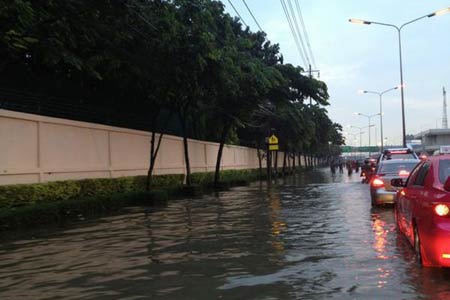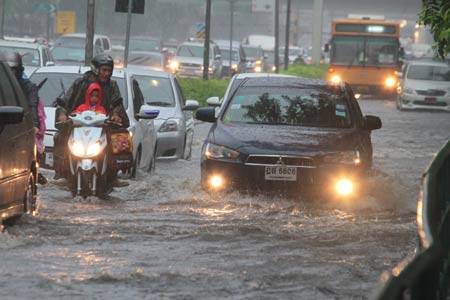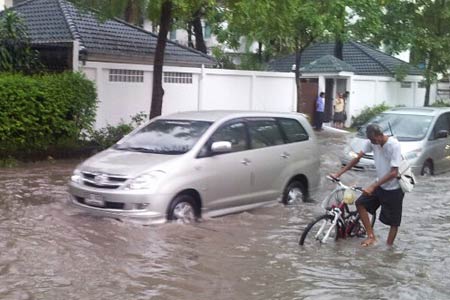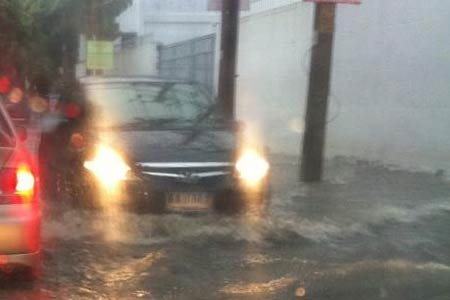The rainfall that drenched the capital from 4pm left commuters and motorists stranded in traffic jams for hours as several major roads were waterlogged, among them Vibhavadi, Phahon Yothin, Sutthisan Winitchai, Ratchadaphisek, Ramkhamhaeng, Ngam Wong Wan and Charan Sanitwong.
The water on most of the roads was between 20 and 30 centimetres deep, spilling over onto pedestrian footpaths.
Sanya Cheenimit, director of the drainage and sewerage department of the Bangkok Metropolitan Administration (BMA), inspected drainage in affected areas and concluded that a total of 16 locations and roads in the capital had been clogged with water due to several hours of heavy rains.
Thawi Watthana district recorded with highest volume of rain at 142 millimetres, followed by Din Daeng (95mm) and Bang Phlat (85mm), he said.
Mr Sanya said earlier that City Hall expected to drain all of the water from the streets by about 8pm if the rain stopped.

Vibhavadi Road (Photo by Post Today)

Phaya Thai Road (Photo by Post Today)

Ramkhamhaeng Soi 21 (Photo by Post Today)

In front of the Channel 7 Headquarters Building on Phahon Yothin Road.
http://www.bangkokpost.com




